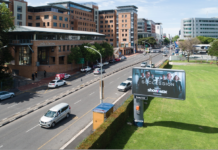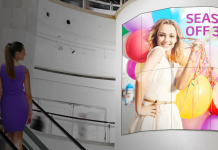According to Chris Day, Managing Director of Moving Tactics, the trends that they have predicted over the last few years have become the norm and they work exceedingly well. It is essential that the basic building blocks are in place on which to build a value-add system that has the capability to accommodate the digital signage solutions that will continue to shape the industry in the coming year.
Digital signage has become an accepted and necessary marketing and advertising channel across most industries, most notably in retail and Quick-Service Restaurant (QSR) outlets. What were previously digital signage technology trends have become core requirements for marketers wanting to engage with customers and build their brand.
1. Get the basics right
Kevin Bierman, Head of Digital Signage at Moving Tactics, said ‘My best advice to clients would be to get the basics right, such as employing quality commercial grade screens and implementing System-on-Chip technology, which replaces the need for external media players. These are absolute musts.’
Firstly, quality commercial grade screens end up costing brands less in the long run as they are less likely to fail, use less power and are hardy enough to deal with load shedding and regular power cuts. These screens also automatically switch back on after a power failure so that your marketing and advertising content can continue unaffected.
Secondly, System-on-Chip (SOC) digital signage technology does away with using multiple pieces of equipment, resulting in a much more streamlined solution, while providing overall health of your digital signage assets. This technology makes it possible to pair normal digital signage with value-add features such as scheduling and day parting, amongst others.
2. Weather-based menu boards
Weather-based content for digital menu boards is becoming the norm for leading QSR brands. Weather-based digital menu boards will replace menu items being displayed based on the actual weather being experienced outside, in real time. So if it’s a cooler day, warmer and heartier foods will be promoted and displayed in place of frozen drinks and salads on the menu boards.
In addition, menu items promoted based on the time of day, also known as day-parting for breakfast and lunch, give customers more choice as well as more practical and relevant food options; and for the restauranteur, the pricing on menu boards can be linked directly to the point of sale system and updated in real time.
3. In-store music
Research has confirmed that consumers shop for longer, spend more money and have an enhanced shopping experience if they’re exposed to music. In this way, local and international retail and restaurant brands are installing in-store music and audio solutions to create a more engaging and brand-specific experience.
4. Staff training on digital screens
Early morning in-store training for staff has progressed with the latest technology advancements and can be scheduled in a similar way to promotional content. Staff training no longer needs to be done live or scheduled weeks ahead of time. With the latest technologies, staff are able to stream or download the most recent training that needs to be undertaken via the corporate network. Using the digital audio and visual network in-store, makes training as easy as 1, 2, 3.
5. Refresh your network
Technology is ever-evolving and a digital signage network should be refreshed every three years to keep equipment compatible with the latest software. Obsolete equipment often negates the time and effort put into creating content to promote products and services. We do, however, understand that refreshing a network can be a costly exercise. It’s for this reason that we recommend rental finance options with financial flexibility.
Read the top 5 stories weekly on WhatsApp or sign up to our newsletter.










